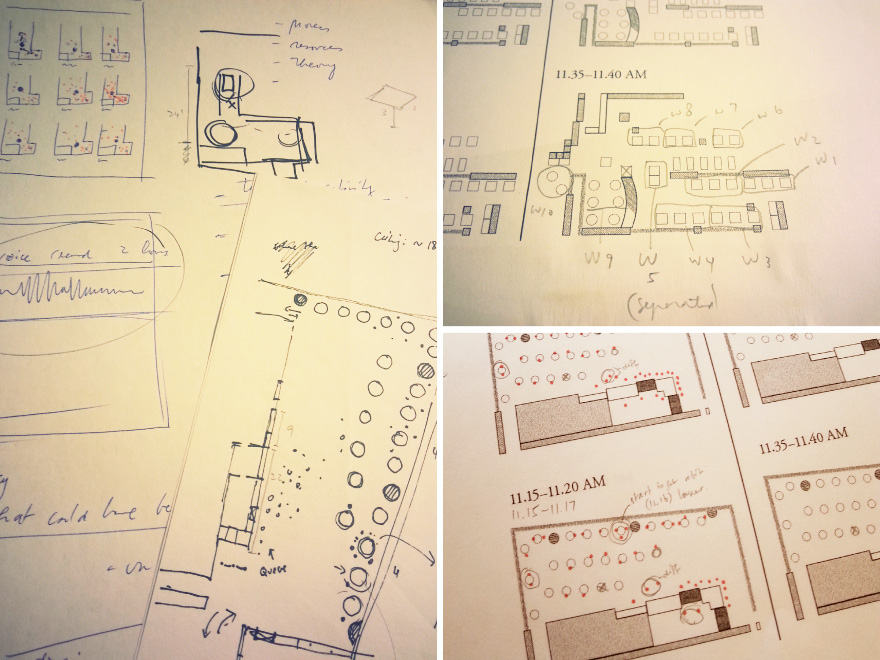TEAM
Darwin
RESPONSIBILITIES
• Design Research Methods
• Conduct Observational Research
• Organize Data
• Audio Edit
• Analysis + Synthesis
OBJECTIVE
The tasks of this research exploration consisted of mapping the location of people and noise concentration (whenever possible) and measuring overall levels of noise over time. The purpose of this study, however, was not to look at noise level as the emergent phenomena. Instead, it was an attempt to sketch out what possible rules and behaviors may influence noise in public spaces. The observational research was conducted at both Heirloom Cafe at Wexner Center and KSA Cafe at Knowlton School of Architecture at The Ohio State University.
RESEARCH METHOD
First, an environmental audit was done by looking at the design elements and organization of the space and creating outlines of the floor plans for both cafes. The floor plans served as an overhead diagram to map where people were during the period of the observations (5-minute intervals for an hour and a half).


Second, while conducting the observational research, audio of the environment was recorded. The audio was later imported to an audio editor — Wavepad. The audio editor created the visualization of the sound. By looking at the sound waves and comparing them with the plotting of the floor plans, areas that seemed interesting could be isolated. Quantitative data were analyzed and a set of basic rules and behaviors was constructed to help make sense of the patterns of the noise pollution.

ANALYSIS
Throughout the process of the observational research, the environment was also audio-recorded, which was then imported to an audio editor (Wavepad), in order to create a visualization of the sound of the environment.

A floor plan of Wexner Heirloom Cafe, as an example, with observational notes that span for over a period of an hour and a half. The observation started at 11.00 AM and ended at 12.30 PM at Wexner’s Heirloom Cafe (diagram below). From the observer’s perspective (marked [X]), the areas of noise concentrations (where the blue circles are) were on W1, W2 and W3. The different values and the overlaps of the red dots are the results of overlaying all the 5-minutes interval recording on top of each other.

INSIGHTS
From the research data, different rules were constructed to sketch out the behaviors in the cafeterias. Even in a small scale system, like a cafeteria, complex behaviors could arise from low-level interactions of rudimentary behaviors.

REFLECTIONS
1. Even in a small scale system, like a cafeteria, emergent behaviors could arise. Human’s sphere of influence not only relies on the quantity of the interacting agents, but also on the quality of the interactions. An individual with a strong presence (like loudness) could have different kinds of influence to other groups. Interactions and encounters of the crowd raised or lowered the noise concentration. And through those interactions, complex behaviors emerged.
2. The observational study was quite holistic and encapsulated quite a wide range of different parameters and data in order to study emergent systems in cafeterias. Breaking the duration of the observation into 5-minute increments helped with simplifying data, thus making recording the observation more manageable. While the method was quite holistic, it was limited to the point of view of the observer. The areas further away from the observer’s seat were difficult to observe. The further away the area from the observer’s point of view, the less accurate the observation would be.





